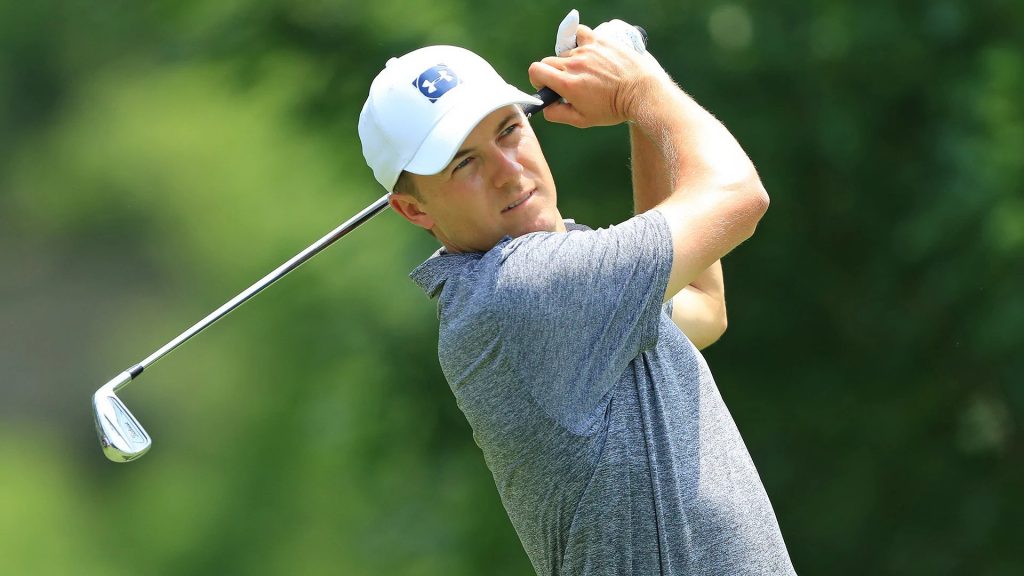Golf is not just a game of precision and strategy—it also demands optimal physical conditioning. Both amateur and professional golfers increasingly recognize that physical fitness plays a critical role in supporting on-course performance. Golf fitness is a holistic approach designed to strengthen the body, enhance flexibility, improve balance, and prevent injuries caused by repetitive golf movements.
However, achieving the best results from golf fitness requires the right approach. It’s not just about doing regular workouts but tailoring them to meet the body’s unique requirements in golf. Here’s a comprehensive guide from GoGolf on how to perform golf fitness effectively, with a detailed explanation of each essential aspect.
1. Focus on the Muscles Involved in the Golf Swing
One of the key principles of an effective golf fitness program is targeting the specific muscles used in a golf swing. The swing is a full-body motion involving the core, back, shoulders, arms, hips, and legs. Therefore, your workouts must focus on strengthening these major muscle groups.
Recommended exercises include planks to strengthen the abs and lower back, shoulder presses or lateral raises for shoulder power, and squats and lunges to build leg stability. Resistance bands are also highly effective for developing strength without putting excess stress on the joints.
It’s crucial to perform these exercises with proper technique and gradually increase intensity over time. Avoid focusing only on one muscle group since golf requires balanced engagement of the entire body. Muscle imbalance may lead to poor mechanics and potential long-term injury.
Remember, the goal of strength training in golf fitness is not only to increase swing power but also to support proper posture during the swing and maintain endurance while standing and walking the course for extended periods.
2. The Importance of Correct Technique and Posture During Training
Proper technique and posture are fundamental in all forms of physical training—and golf fitness is no exception. Incorrect posture can lead to serious injuries, particularly in the lower back, neck, or shoulders. Understanding and maintaining proper alignment is essential before beginning any workout routine.
In golf-specific training, one of the most important positions to master is maintaining a neutral spine and proper hip alignment during rotational exercises. Many golfers unknowingly place stress on their spine by performing movements like bent-over rows or torso rotations with poor posture.
To prevent this, golfers should learn to keep the spine neutral, distribute body weight evenly between both legs, and stabilize the knees during movement. This same principle applies to golf-swing simulation exercises using training sticks or medicine balls.
At a more advanced level, coaches often introduce basic biomechanics principles such as the kinetic chain—how energy transfers from the lower body to the upper body—to ensure every motion is efficient and safe.
Developing proper posture in training will translate directly to improved control and balance on the golf course. It enhances swing consistency and reduces compensatory movements that can compromise accuracy and cause strain.
3. Flexibility and Stretching: The Key to Muscle Mobility
Flexibility plays a major role in allowing a golfer to perform a full rotation during the swing without pain or tension. Stretching and flexibility training should therefore be a central part of every golf fitness session—both during warm-ups and cooldowns.
Yoga and dynamic stretching are especially effective. Yoga poses such as cat-cow stretch, child’s pose, and spinal twist improve flexibility in the spine and hips. Meanwhile, dynamic stretches like arm swings, torso rotations, and leg swings are ideal for warming up before practice or play.
Regular stretching helps maintain muscle elasticity and connective tissue resilience, allowing the body to adapt better to the stress of repetitive golf movements. It also enhances swing efficiency, enabling wider rotation and smoother follow-through.
Flexibility training not only prevents injuries but also accelerates muscle recovery after play or intense training sessions. Flexible muscles move more freely, reducing stiffness and minimizing strain-related pain.
Moreover, stretching has mental benefits—it calms the mind and improves focus before teeing off. The combination of physical flexibility and mental clarity leads to a more enjoyable and effective round of golf.
4. Core and Rotational Strength: The Foundation of a Powerful Swing
The golf swing is a complex, full-body motion that relies heavily on core strength and rotational ability. The core—which includes the abs, lower back, and hip muscles—acts as the body’s power center and stabilizer throughout every movement. Without adequate core strength, a golfer struggles to produce consistent, powerful swings.
Effective core workouts include planks, side planks, Russian twists, and cable rotations. Tools like a stability ball are also great for enhancing core engagement and improving balance simultaneously.
Rotational training is equally vital. It allows the body to move fluidly through the backswing and follow-through phases. Without good rotational mobility, the swing becomes rigid and poorly synchronized, reducing control and speed.
By combining core and rotational exercises, golfers develop a more stable, accurate, and powerful swing. A strong midsection also improves balance when standing on uneven terrain or hitting from difficult lies such as bunkers or roughs.
This foundation of strength not only improves performance but also helps reduce joint stress and lowers the risk of repetitive strain injuries common among golfers.

5. Combining Strength and Control in Training
A common mistake in golf fitness is focusing too much on building strength without developing movement control. In golf, raw power means little if it isn’t combined with precise control and coordination. The ideal fitness program balances both aspects through functional training.
Functional training emphasizes quality of movement over muscle size. Instead of heavy bench presses, golfers benefit more from using resistance bands, medicine balls, or TRX suspension systems to mimic real golf motions and strengthen the muscles involved in everyday swing patterns.
For example, rotational medicine ball throws simulate the body’s twisting motion during the swing, strengthening the hips, core, and shoulders while training precise movement control. Other exercises, such as single-leg deadlifts or cable chops, integrate strength, balance, and coordination into one motion.
These workouts also improve neuromuscular control—the body’s ability to time and coordinate muscle activation efficiently. In golf, this ability is critical for adjusting swing power, whether for short-game precision or a full-power drive.
By merging strength with control, golfers achieve smoother, more consistent, and injury-resistant swings. Controlled movements also reduce the risk of sudden strain or overextension during play.
6. The Importance of Warm-Up and Cool-Down in Golf Fitness
Warm-up and cool-down are often overlooked but are essential components of effective golf fitness. Golf involves complex rotational motions repeated over time, so both preparation and recovery are crucial to maintain long-term performance and prevent injury.
Warm-ups should begin with light aerobic activity such as brisk walking or jumping jacks, followed by dynamic stretches to increase blood flow and joint mobility. Then, move on to golf-specific movements like torso twists, arm circles, hip openers, and shoulder rolls to activate key muscles. Breathing exercises such as diaphragmatic breathing can also help calm the body and stabilize posture before swinging.
The benefits of warming up include increased joint flexibility, better muscular response, and improved mental focus. Proper warm-ups also drastically reduce the risk of muscle tears, cramps, or lower back pain.
Cooling down, on the other hand, helps gradually lower heart rate, remove lactic acid buildup, and prevent post-exercise stiffness or soreness (DOMS – Delayed Onset Muscle Soreness). Static stretches like hamstring stretches, quad stretches, or lower back stretches, combined with foam rolling or light meditation, are ideal.
By making warm-ups and cooldowns a mandatory part of training, golfers can maintain peak fitness, enhance recovery, and create a disciplined, effective fitness routine that supports long-term improvement.
7. Adjusting Intensity and Duration to Prevent Overuse
Overtraining and overuse injuries are real concerns for golfers. Since golf swings involve repetitive rotational movements, certain joints and muscles—especially in the shoulders, wrists, and lower back—can be overworked if not properly rested.
Golfers should tailor training intensity and duration to their individual fitness levels, age, and playing frequency. High-intensity workouts shouldn’t be done every day. Ideally, aim for 3–4 sessions per week, alternating between strength, flexibility, and active recovery days.
It’s also important to listen to the body. Persistent soreness in the lower back, wrists, or shoulders, or a noticeable drop in performance, may signal fatigue or strain. In such cases, replace intense sessions with recovery techniques like massage therapy, active stretching, or relaxation exercises.
Using heart rate monitors or recovery trackers can help manage workload and avoid exceeding physical limits. Incorporating the periodization principle—dividing training into phases of intensity, maintenance, and recovery—ensures sustainable long-term progress.
A balanced approach to training intensity keeps golf fitness productive, promoting consistent gains without risking burnout or injury.
8. The Benefits of Professional Guidance and Coaching
While many golf fitness exercises can be done independently, working with a professional coach or sports physiotherapist offers immense advantages—especially for beginners or golfers with a history of injury.
A trainer experienced in golf biomechanics can design a personalized program that aligns with your posture, swing style, and physical condition. For example, if a player struggles with hip rotation, the coach can introduce mobility drills focused on that area while maintaining upper-body strength.
Professional trainers also correct improper technique—one of the most common causes of chronic golf injuries. They provide structured feedback, monitor progress, and adjust training intensity based on regular evaluations.
For advanced or professional players, collaboration with a multidisciplinary team—including nutritionists, physiotherapists, and technical coaches—can create a holistic performance enhancement plan. Even for recreational golfers, periodic consultations help build motivation and maintain consistency.
Ultimately, success in golf fitness depends not just on what exercises you do, but how the program is designed, supervised, and refined over time. With professional support, golfers can minimize injury risks while maximizing performance gains, leading to a stronger, healthier, and more efficient game on the course.
[ Follow our social media Account: GoGolf Instagram | GoGolf Facebook | GoGolf X ]











